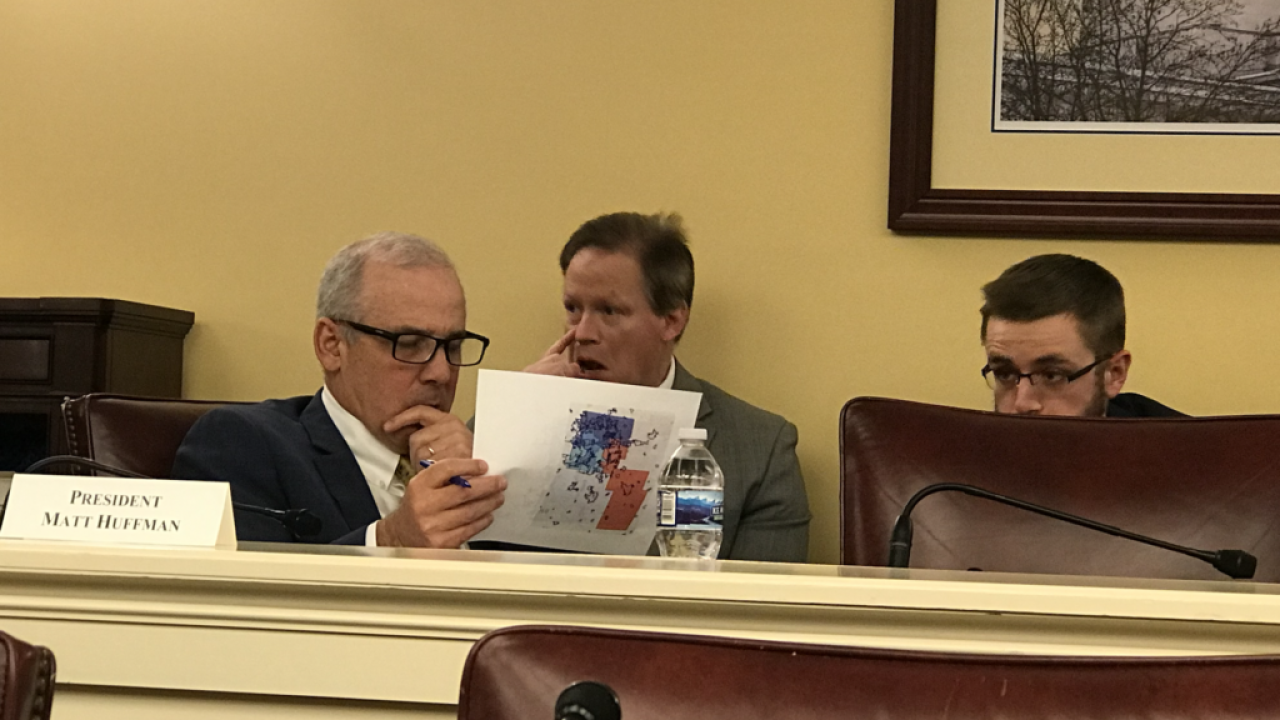The following article was originally published in the Ohio Capital Journal and published on News5Cleveland.com under a content-sharing agreement.
New Ohio Statehouse and U.S. Congressional maps are due this year, just like they were last year. But political scientists in the state aren’t holding out hope that major changes are coming.
“It really is the ultimate political Groundhog Day without the redeeming learning that Bill Murray had,” said David Niven, political science associate professor with the University of Cincinnati.
In September 2021, the redrawing of voting districts that used to happen every 10 years began, in what became a two-year long battle between the elected officials who made up the Ohio Redistricting Commission and a slim majority of the Ohio Supreme Court.
After five attempts at Statehouse maps and two at Congressional maps, a federal court intervened to allow a set of unconstitutional maps go forward for the 2022 election.
None of the maps had bipartisan support, and toward the end of the ORC’s public meetings, the maps were merely slightly revised versions of previously rejected maps.
Moving forward, anti-gerrymandering advocates and political scientists alike see no incentive for Republican majority leaders to change any of the process, especially before the U.S. Supreme Court rules on Moore v. Harper, a case that will decide how much power state legislatures should have with regard to elections.
There were rumblings that Ohio House Democrats struck a deal with new House Speaker Jason Stephens to push for bipartisan agreement in redistricting, but in-fighting among Republicans has made any agreement at all uncertain.
Niven, who researches gerrymandering as part of his work, has been outspoken in the two years since the newest redistricting effort started. He stood in opposition to the GOP-led maps, speaking at several public hearings and pushing for an independent redistricting commission.
But with a state supreme court no longer led by Republican swing-vote Chief Justice Maureen O’Connor, who voted against every map presented to the court by the ORC, but by Chief Justice Sharon Kennedy, who dissented every time a map was struck down as unconstitutional, Niven doesn’t see any change happening in that venue.
“This is a rubber stamp court and they’re going to rubber stamp whatever map they’re brought,” Niven said.
Niven and anti-gerrymandering advocates also take issue with the fact that Gov. Mike DeWine’s son, Patrick DeWine, is a justice on the court, and has chosen not to recuse himself from redistricting cases.
The way forward has to eliminate the partisanship of the Ohio Redistricting Commission through a citizens redistricting effort, putting map drawing in the hands of less biased individuals, both Niven and Dr. David Cohen, political science professor and director of the Applied Politics Program at University of Akron’s Bliss Institute.
“My hope is that they would have as few political actors as possible on a future commission and really leave it in the hands of academics and true experts,” Cohen told the OCJ.
That could be possible through a new ballot initiative, which Cohen predicts would have the support of a majority of Ohio voters if they’re allowed to have their say.
“The fact that it would be essentially a completely new body and Ohioans would be given the choice of: Do we want the politicians to keep drawing these terribly flawed lines or do we give the mapmaking pen to citizens,” Cohen said. “I think that will be a very attractive option.”
That ballot initiative won’t be a part of 2024 elections, predicts Niven, and it definitely won’t be proposed by the legislature itself, considering some members of the GOP supermajority have pushed to make it harder for a constitutional amendment to pass.
If redistricting reform in the form of a ballot initiative sounds familiar, that’s because it happened before the latest round of map-drawing. In 2015 and 2018, voters overwhelmingly passed reforms that led to the Ohio Redistricting Commission, but the measures only made it to the ballot after heavy negotiation between Democrats and Republicans, which led to the partisan makeup of the ORC.
“The bottom line is almost every aspect of the reform proved to be no match for insincere and hostile participants,” Niven said.
While they wait for redistricting to begin again, Niven and Cohen they are navigating uncharted waters when it comes to explaining the political landscape to their students.
“It’s an unusual dynamic,” Niven said. “We having debates in class on whether this is the single craziest state legislature out there.”
Cohen says it’s a challenge dealing with not just the idea of near-daily unprecedented events, such as the COVID-19 pandemic, the chaos surrounding the votes for U.S. House Speaker and years-long state redistricting, but also the overwhelming speed at which the events occur.
He emphasizes the importance of voting and democratic responsibility, even as he faces his own existential crisis.
“This is the first time in my lifetime that I am legitimately worried about our system of government and whether or not it is going to remain in place in the longterm,” Cohen said.


